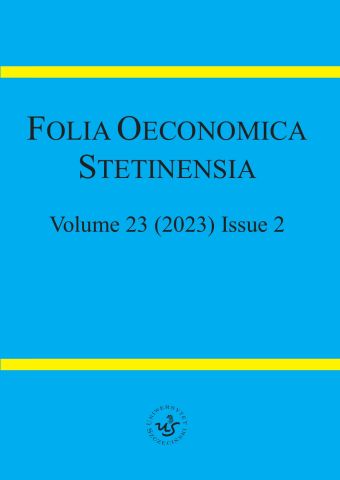Examining Fruit Demand Elasticities in Pakistan
Examining Fruit Demand Elasticities in Pakistan
Author(s): Sarah Iqbal, Muhammad Fayaz, Irfan Ullah, Harun Uçak, Syed Attaullah Shah, Farheen SayamSubject(s): Economy, Business Economy / Management, Micro-Economics, Agriculture, Marketing / Advertising
Published by: Wydawnictwo Naukowe Uniwersytetu Szczecińskiego
Keywords: fruits; LA/AIDS; Expenditures elasticities; Marshallian elasticities; Hicksian elasticities; Pakistan
Summary/Abstract: Research background: Income and prices are important factors that determine and decide households consumption decisions and behavior. Purpose and research methodology: This paper aims to examine fruits’ demand elasticities in Pakistan by using the Linear Approximate Almost Ideal Demand System (LA/AIDS). For this purpose, data from the Household Integrated Economic Survey (HIES) 2018–2019 part of Pakistan Living Standard and Measurement is used for the selected fruits. Results: Marshallian, Hicksian, and expenditures elasticities were calculated through the estimated parameter from the Linear Approximate Almost Ideal demand system. The results show that all the estimated expenditure elasticities of the selected fruits for Pakistan are positive. The magnitude of expenditure elasticities for bananas, malta, apple, grapes, watermelon, plum, and almonds, is less than unity, and are thus categorized as normal food items. The estimated uncompensated own price demand elasticities for all fruits are less than unity (inelastic) for Pakistan and thus categorized as necessities. Based on the cross-price uncompensated demand elasticities eighteen fruits are reported as gross complements and three fruits are gross substitutes. Most of the fruits are categorized as neutral fruits having no cross-price effect on each other’s demand as their estimated elasticities are closer to zero. Only apples with grapes and almonds are found to be notable substitutes. As most of the price elasticities of fruits are inelastic, any change in their price would result in a massive increase in expenditure on these fruits. As a result, the government may adopt policies for the stabilization of fruit prices to meet the minimal daily food requirements of the lower segments of society. Novelty: This study is an attempt to estimate demand elasticities for individual fruit as very little research is available in the study area for individual commodities.
Journal: Folia Oeconomica Stetinensia
- Issue Year: 23/2023
- Issue No: 2
- Page Range: 150-168
- Page Count: 19
- Language: English

